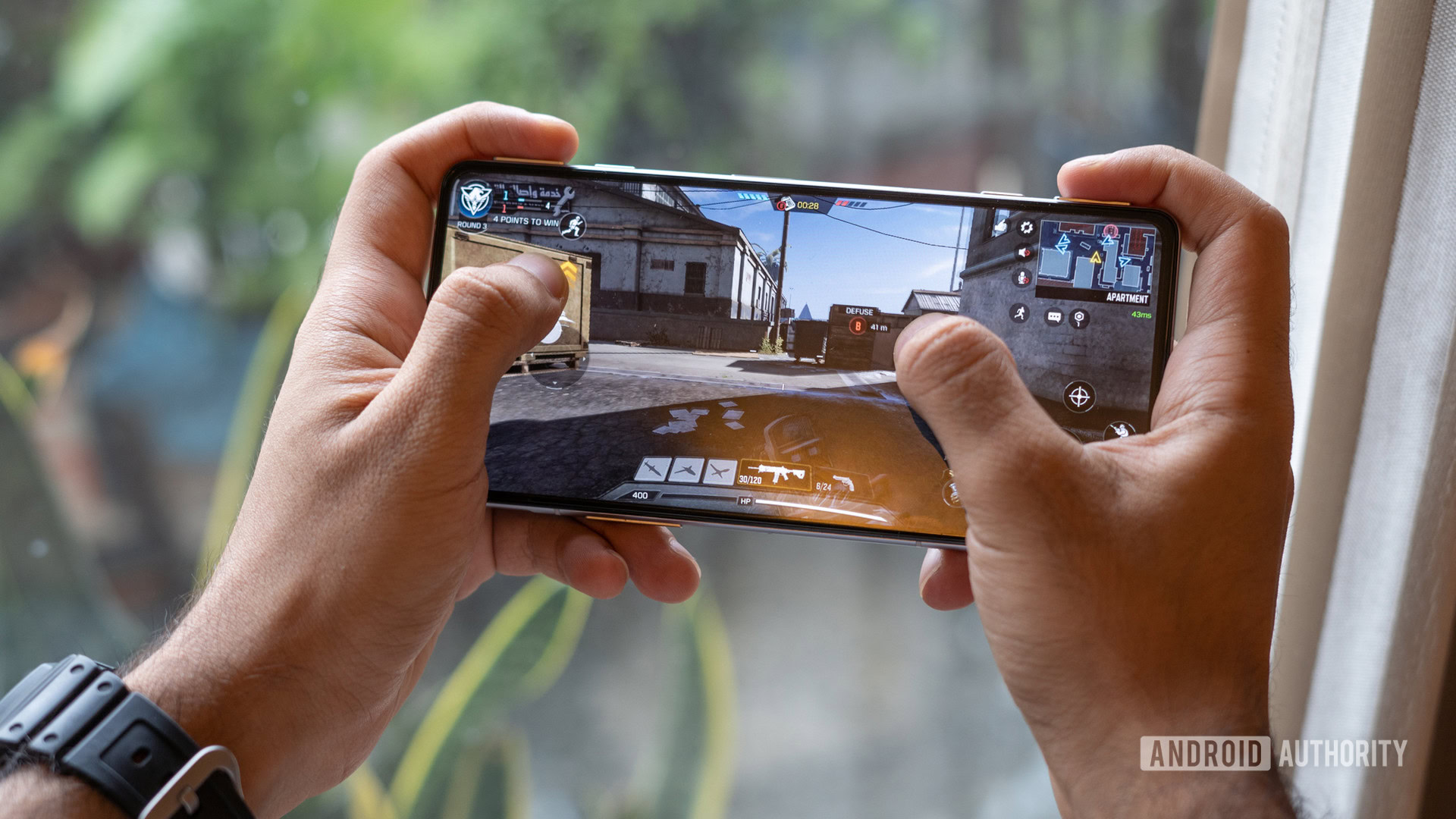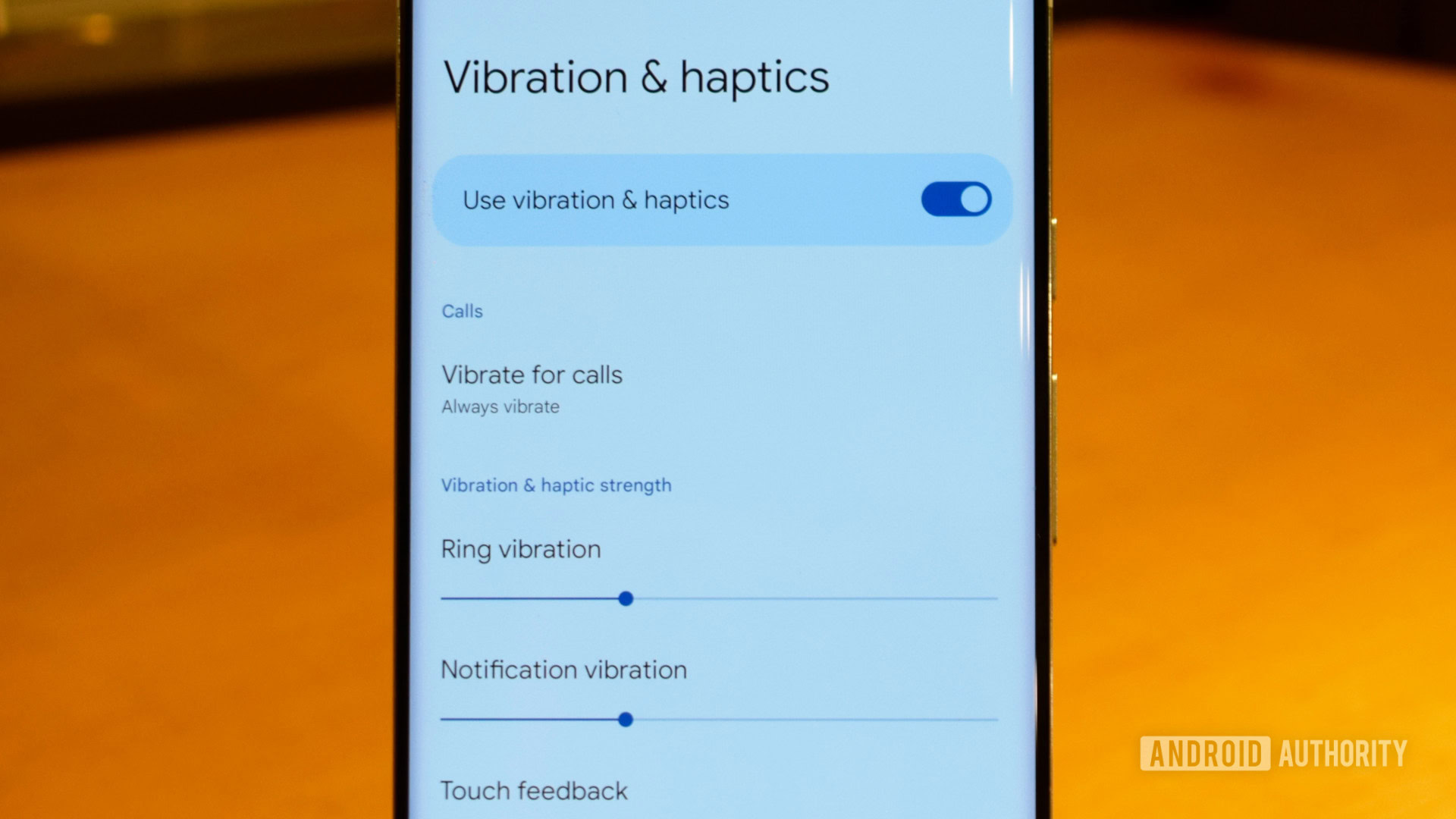Affiliate links on Android Authority may earn us a commission. Learn more.
Why you’ll want high definition haptics in your next smartphone
Did you feel that? The vibration of a new notification, that rumble of that movie explosion, the kickback while closing out that tense battle royal match? Those are all powered by the haptics included inside your smartphone. High-quality haptics can make or break the feel and feedback provided on a modern handset. Who wants a pathetic buzz when you can have strong, crispy, attention-grabbing clicks and rumbles?
While sometimes taken for granted, the use cases for haptic feedback are only growing and are quickly serving as a major product differentiator, particularly where gaming is concerned. Similarly, haptics are also an important feature for accessibility, with Apple and Google, among others, utilizing haptics to complement traditional visual cues across their smartphone UIs. The case for picking up powerful haptic hardware is more compelling than ever.
Fortunately, advanced haptic features are already here with phones such as the Google Pixel 6 and Pixel 6 Pro. They will be heading to many more smartphones in 2022, thanks to new and improved advanced integration in Android 12.

For example, Google has introduced what it calls an “audio-coupled haptic effect,” which is another way of saying real-time audio-to-haptic generation or haptics on the fly. Google has embedded this feature, and others, into its latest Pixel 6 smartphone series, which are highly regarded for their haptic feedback quality.
In effect, audio-coupled haptics convert an audio playback stream directly into a matching haptics stream, so you can feel that music, movie, or game in real-time. Alternatively, you could tie a unique ringtone to each of your contacts, which, thanks to haptics on the fly, produces a custom vibration for them as well. That way, you’ll know who’s calling even with your phone on silent mode. The added benefit with haptics on the fly is that it doesn’t require developers to hard code haptic effects into their apps, saving precious development time and costs.
Read more: What’s new in Android 12
Android 12 also introduces the ability to change the frequency and amplitude of vibrations on a much more granular level. In other words, superior feeling haptics with more variation and definition than has been possible in the past. The latest OS also bakes in better support for game controller vibrations too. Many more handsets are expected to ship with these features as Android 12 makes its way to new and existing smartphones.
But making the most of these better-than-ever feedback features requires haptics hardware to match since the software can only do half the work. A haptics driver integrated circuit (IC) contains all the necessary hooks to take Android’s API and pass it through a haptics motor to produce the desired rumble.

Cirrus Logic, which you may remember from its audio and speaker chips, offers just such an IC solution for smartphones. Cirrus Logic’s HD haptic technology combines audio and haptic capabilities, eliminating lag between what the user hears and feels. The Google Pixel 6 series, one of 2021’s standout phones for haptic quality, features a Cirrus Logic CS40L25B haptic driver IC. Complete with a low-latency haptic trigger, fast wake-up, and power-efficient amplification, this chipset provides everything a phone needs for an industry-leading haptics experience.
Combined with the aforementioned haptics on the fly approach, Cirrus Logic offers a complete solution for cutting-edge haptics for ringtones, audio, video, games, and more emerging use cases. We’re anticipating that many more smartphones intend to ship with world-class haptics throughout 2022 and beyond.